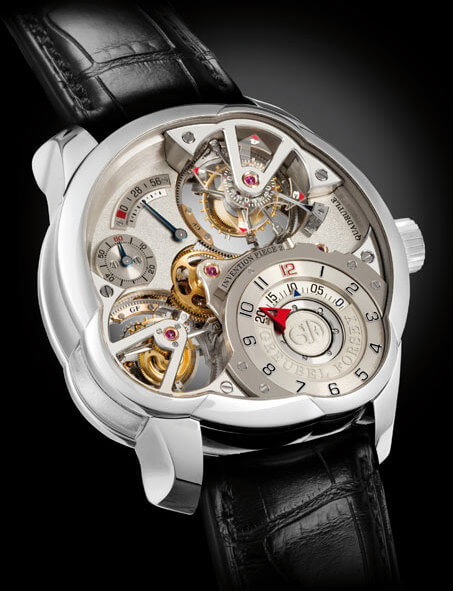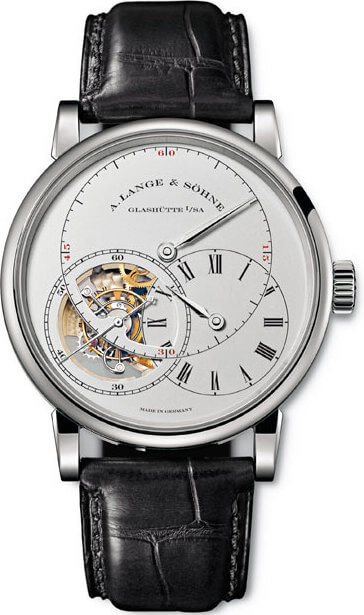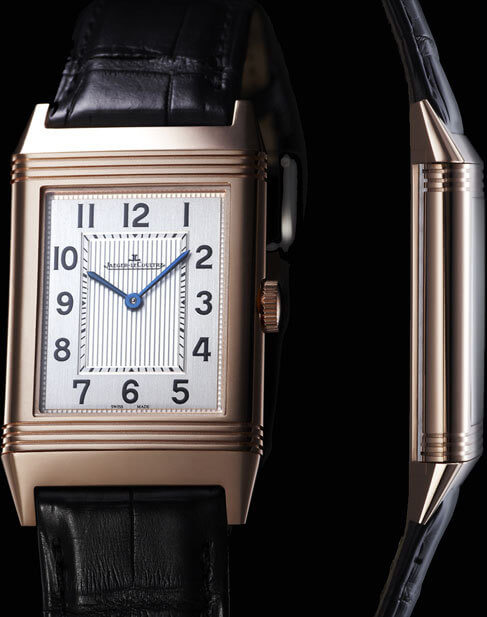Why make things complicated when they can be simple? This maxim could easily be applied to the 21st SIHH (Salon International de la Haute Horlogerie), which took place from 17 to 21 January. After strong growth in watch exports of around 20% for 2010, one might think that watchmakers would give free rein to the extravagance to which they had become accustomed in the past few years. This was not the case. Given that it takes between two and five years to develop a new watch, many 2011 designs were on the drawing board at the height of the sub-prime crisis that brought the financial sector to its knees before spreading to other areas, including luxury goods.
Smaller collections
As a result, this year’s collections were much smaller than those presented at SIHH in previous years, and generally reflected the brands’ traditional values, which has caused them to seek inspiration in their history and heritage, updating the designs in neo-classical form. Examples abound. Jaeger-LeCoultre made it the year of the Reverso to celebrate the 80th anniversary of its iconic watch (see inset); Vacheron Constantin breathed life back into its Aronde, a timepiece that first appeared in 1954; Audemars Piguet paid tribute to its historic range Jules Audemars, with five new pieces; IWC revisited its Portofino collection of 1984, with four new versions; Montblanc, whose entry into luxury watchmaking is much more recent, celebrated 190 years of the chronograph invented by Nicolas Rieussec with an eponymous collection that is already a classic, just three years after its launch.
Meanwhile, Panerai paid homage to its Luminor, dating from 1950; Girard-Perregaux celebrated its 220 year history of watchmaking with an anniversary edition 1966 Tourbillon, with a bridge that symbolises the brand’s different golden ages, as well as a 1966 Small Second and a Vintage 1945 XXL; Jeanrichard found inspiration in a pocket watch produced 300 years ago by Daniel Jeanrichard, with its Bressel Hommage “Daniel”, alongside a Bressel 1665 Small Hour and Minute with a calibre JR1040; Piaget updated its very classic Altiplano with gem-set versions; even Greubel Forsey extended its quadruple tourbillon with a new architecture, the Invention Piece 2.

Technical and artistic expertise
The list goes on. This introspection and focus on heritage was the major theme of the fair, though this did not mean watchmakers neglected other aspects of luxury timepieces. Artistic expertise remained the hallmark of Van Cleef & Arpels, for example, notably with its Extraordinary Dials, with two themes, Africa and Antarctica, or its collection Les Voyages Extraordinaires, inspired by Jules Verne. We found the same approach at Cartier, with its Cartier d’Art collection, with each watch depicting a different animal finely crafted in gems, enamel, engraving and wood. Cartier also unveiled three new complicated movements including the already famous Astrorégulateur, making clear its intention to be a fully-fledged luxury watchmaker after just four years in this field.
Loyal to its traditions, Richard Mille also presented some stunning new pieces including the RM 030 with declutchable rotor, the RM 017 Tourbillon Extra Flat, and the RM 038 Tourbillon Bubba Watson, designed specially for this big hitter on the golf courses, in the same vein as the RM 027 designed for Rafael Nadal. Also noteworthy were Montblanc’s Tourbillon Bi-Cylindrique with cylindrical double balance-spring, the Patrimony Traditionnelle World Time from Vacheron Constantin, which shows the world’s 37 time zones, the Piaget Emperador Tourbillon Automatique, with the calibre 1270P, the brand’s first ultra-thin automatic tourbillon movement, and the Richard Lange Tourbillon “Pour le Mérite”, featuring a fusee-and-chain transmission and a tourbillon with patented stop-seconds function. Meanwhile, Parmigiani caused a stir with its clock featuring a 30-year continuous lunar calendar, a world first.
Although classicism reigned this year, as we have seen, the technical qualities of some watches are proof that “haute horlogerie” has not lost its capacity to innovate. Unlike 2010, however, when astronomical watches were all the rage, no particular theme stood out this year, simply a demonstration of how expertise can be harnessed to promote elegance.



























